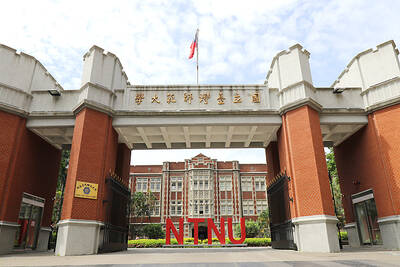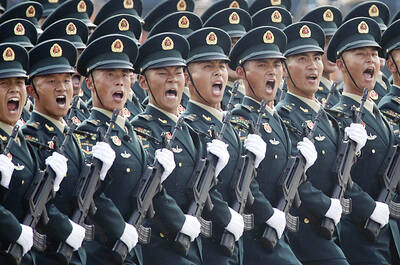The rhetorical battle over the so-called “1992 consensus” continued over the weekend while Typhoon Nanmadol approached Taiwan, with President Ma Ying-jeou (馬英九) taking the lead, accusing the Democratic Progressive Party (DPP) of refusing to accept the consensus.
At a press conference on Sunday, Ma described the DPP and DPP Chairperson Tsai Ing-wen (蔡英文), his rival in the presidential election in January, as “irrational,” saying they had denied the existence of the consensus simply because they opposed it.
‘Ambiguous’
Many officials and academics, including Ma and former representatives to the US Stephen Chen (陳錫蕃) and Lu Yi-cheng (陸以正), labeled the “Taiwan consensus” proposed by Tsai as “ambiguous” and “infeasible,” while underlining the importance of the “1992 consensus” as the foundation of cross-strait engagement.
Ma also challenged Tsai’s cross-strait platform, urging her to clarify whether she supported the “three noes” and to explain “more clearly” what she means by “Taiwan consensus.”
The “three noes” refer to no discussion of unification with Beijing, no pursuit of, or support for, de jure Taiwanese independence and no use of force to resolve cross-strait disputes.
The DPP and Tsai chose to remain silent and refrain from engaging in extended argument while Typhoon Nanmadol pounded the south. Nonetheless, discussions about the consensus were all over the print and broadcast media.
ARTIFICIAL
The “1992 consensus” was an “artificial term invented” after a meeting between the semi-official representatives of Taiwan and China in 1992 and “historically speaking, the ‘1992 consensus’ does not exist,” said Hung Chi-chang (洪奇昌), a Straits Exchange Foundation (SEF) chairman under the former DPP administration.
The consensus, even if it existed, was based on the “one China” principle, he said, adding that “the DPP argues that a new term, a new platform or a new framework has to be established.”
The world has changed so much between 1992 — when China was about to get its feet wet in a market economy — and now, when China has become arguably one of the global powers, Hung said.
“China’s role in the world, its economic power and the global situation, have all changed. That is why the DPP thinks a new platform is necessary,” he said.
China should not panic about the new framework, he said, because Tsai has made it clear that a Taiwan consensus that the DPP proposes would be based on “peace and stability” as the foundation of future cross-strait exchanges.
Hung also advised the Chinese to recognize the goodwill extended by Tsai when she said the DPP “acknowledges” China’s position in insisting on the “one China” principle and suggested that her party would be far less hostile than before, he said.
The “1992 consensus” was an idea accepted by then-Chinese Nationalist Party (KMT) chairman Lien Chan (連戰) and Chinese Communist Party (CCP) Secretary-General Hu Jintao (胡錦濤) in their meeting in 2005 under the “one China” principle, and was not authorized by representatives from the two governments across the Taiwan Strait, Hung said.
Same side
“When you go back and force Taiwanese to accept the idea, people would think that the KMT is on the same side with the CCP, which I don’t think serves the KMT’s interests,” he said.
“I would say that the DPP should be on the offensive rather the defensive end on the issue [of the ‘1992 consensus’]. The DPP should ask China to explain what exactly the ‘1992 consensus’ is,” said Lo Chih-cheng (羅致政), a political scientist at Soochow University and a DPP legislative candidate.
While the KMT claims that the consensus represents “one China with different interpretations,” Lo said the reality in Taiwan now is a “1992 consensus with different interpretations.”
“The DPP, as well as the people of Taiwan, will decide whether to accept the consensus only after it has been clearly defined,” he said.
PRECONDITIONS
The demand that Taiwan accept the consensus before a resumption of bilateral dialogue is a precondition, which former AIT director Richard Bush described as the first roadblock to bilateral dialogue in his book Untying the Knot, published in 2005.
While China has made it clear to Taiwan that acceptance of the “one China” principle or the “1992 consensus” — or both — are prerequisites to bilateral talks, Bush wrote that the best way to reduce mutual mistrust is for China to abandon preconditions.
China never enters any negotiations without setting up preconditions and every academic who has done research on China knows it, Lo said.
“I don’t see why Taiwan is willing to walk into this trap,” he said.
See EDITORIAL on page 8

CHANGING LANDSCAPE: Many of the part-time programs for educators were no longer needed, as many teachers obtain a graduate degree before joining the workforce, experts said Taiwanese universities this year canceled 86 programs, Ministry of Education data showed, with educators attributing the closures to the nation’s low birthrate as well as shifting trends. Fifty-three of the shuttered programs were part-time postgraduate degree programs, about 62 percent of the total, the most in the past five years, the data showed. National Taiwan Normal University (NTNU) discontinued the most part-time master’s programs, at 16: chemistry, life science, earth science, physics, fine arts, music, special education, health promotion and health education, educational psychology and counseling, education, design, Chinese as a second language, library and information sciences, mechatronics engineering, history, physical education

The Chinese military has boosted its capability to fight at a high tempo using the element of surprise and new technology, the Ministry of National Defense said in the Quadrennial Defense Review (QDR) published on Monday last week. The ministry highlighted Chinese People’s Liberation Army (PLA) developments showing significant changes in Beijing’s strategy for war on Taiwan. The PLA has made significant headway in building capabilities for all-weather, multi-domain intelligence, surveillance, operational control and a joint air-sea blockade against Taiwan’s lines of communication, it said. The PLA has also improved its capabilities in direct amphibious assault operations aimed at seizing strategically important beaches,

New Taipei City prosecutors have indicted a cram school teacher in Sinjhuang District (新莊) for allegedly soliciting sexual acts from female students under the age of 18 three times in exchange for cash payments. The man, surnamed Su (蘇), committed two offenses in 2023 and one last year, the New Taipei District Prosecutors’ Office said. The office in recent days indicted Su for contraventions of the Child and Youth Sexual Exploitation Prevention Act (兒童及少年性剝削防制條例), which prohibits "engaging in sexual intercourse or lewd acts with a minor over the age of 16, but under the age of 18 in exchange for

The High Prosecutors’ Office yesterday withdrew an appeal against the acquittal of a former bank manager 22 years after his death, marking Taiwan’s first instance of prosecutors rendering posthumous justice to a wrongfully convicted defendant. Chu Ching-en (諸慶恩) — formerly a manager at the Taipei branch of BNP Paribas — was in 1999 accused by Weng Mao-chung (翁茂鍾), then-president of Chia Her Industrial Co, of forging a request for a fixed deposit of US$10 million by I-Hwa Industrial Co, a subsidiary of Chia Her, which was used as collateral. Chu was ruled not guilty in the first trial, but was found guilty